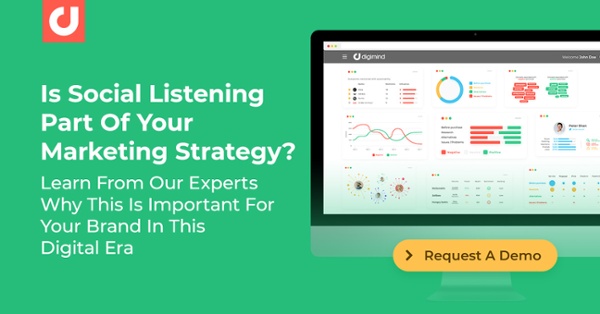10 Ways Brands Use Social Media Listening For Competitor Analysis
How to effectively decipher your competitors on the web and social media with social media listening
We already studied why companies use social media listening, in other words, why they listen to and analyze social media to feed their marketing strategies in terms of objectives, monitoring scope, and benefits. These particularly relate to the improvement of products, customer service, and the acquisition of new customers.
For you to accomplish these goals, you should listen to and analyze conversations on social media, discussion forums, and publications on the web, covering a wide array of topics, such as:
- Analysis and monitoring of your competitors,
- Managing your reputation (notoriety analysis, crisis management, and content marketing),
- Collecting consumer insights (especially for marketing, product improvement, social selling, and customer relations),
- Influencer identification,
- Detection of trends and innovations,
- Analyzing the performance of your campaigns.
Starting with competitor analysis, let's look at the issues facing the different areas and the benefits of social media listening.
I. Benefits and issues of social media monitoring for competitive intelligence and listening
The analysis and monitoring of competitors are one of the foundations of strategic intelligence and a pillar of social media strategies (social competitive intelligence). The challenge here is to better understand your competitors' strategies so you can: anticipate their movements and developments, position yourself concerning them, and detect market opportunities.
Anticipating competitor movements
This involves monitoring the entire ecosystem of your competitors: their various brands, product launches, events, partnerships, appointments, job offers, patent filings, the opening of production sites, commercial subsidiaries, and many more. The monitoring spectrum must be very broad both in terms of keywords (names of brands, products, technologies, managers, executives) and sources (patent databases, financial publications, product tests, job boards, social networks for consumer insights, specialized media for testimonials and product development, etc.).
The competitive benchmark
By continuously using an effective competitor analysis to compare yourself to a selection of competition, you will be able to benefit from KPIs and qualitative reference data to position yourself, visualize your margins of progress, and better understand the means and strategies of your competitors dedicated to social media.
Example in owned media: comparison of content marketing strategies, engagement rates, and community development strategies.
Examples in earned media: a competitive benchmark of campaigns, comparison of the share of voice by product, brand, country, consumer usage, the benchmark of feelings associated with your competitors, summary via SWOT analysis, and more.
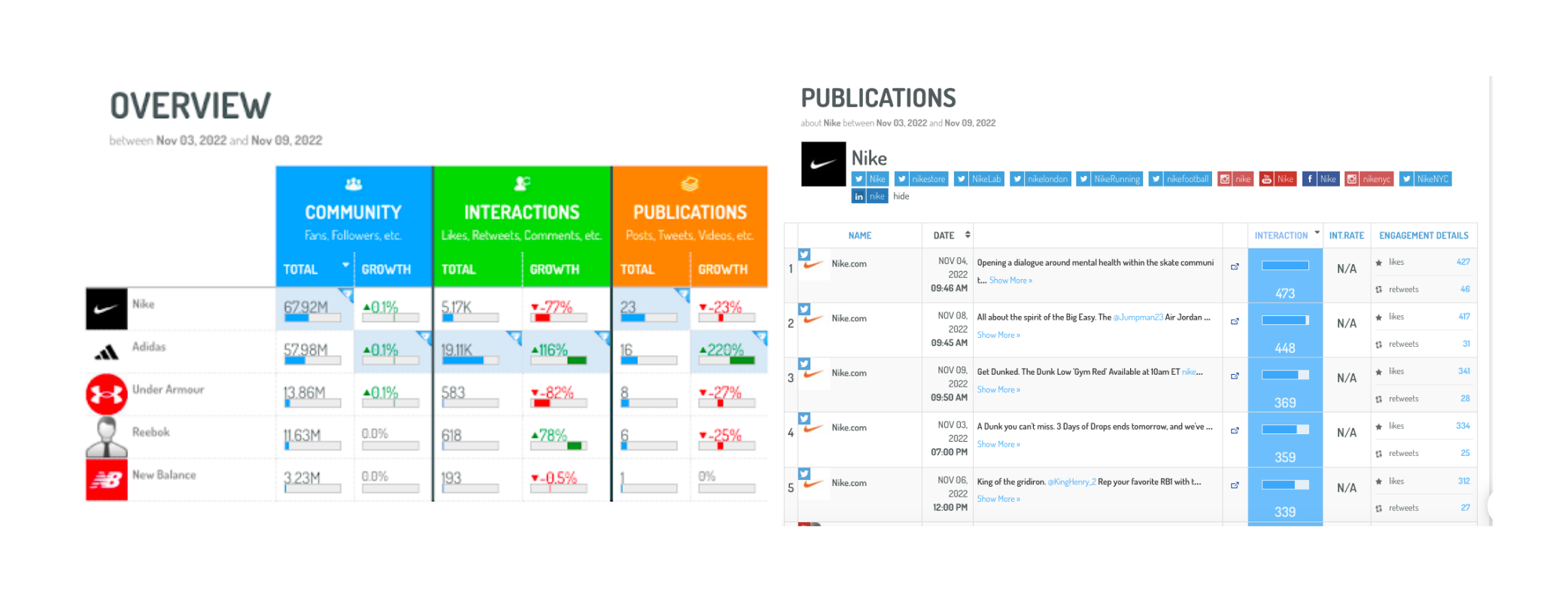
View of competitive social media benchmarks by brands (via Digimind Social)
Identify opportunities and market developments
Competitive intelligence, whether it's carried out online, on social media, or at trade fairs, should make it possible to detect shortcomings among your competitors, gaps in offers, and new needs among your consumers and prospects.
It's necessary to:
- Monitor the entire sector in terms of regulations, technological developments and potential new entrants, changes in consumer usage. Examples of sources: congress sites, polling sites, and opinion institutes.
- Collect consumer insights about competing products,
- Monitor players from other close or particularly dynamic sectors (for example, transport- energy, banking- retail) to inspire you to imagine the evolution of your competitive intelligence,
- And follow influencers on social media and opinion leaders at trade shows and congresses.
II. Competitor analysis: 10 points to observe
1. Carry out an audit of your brand before any competitive intelligence process to facilitate your positioning and the priorities of future monitoring areas.
2. Segment, then define your front-end, indirect, and potential incoming competitors, all of which should be synthesized into a map that will be updated annually.
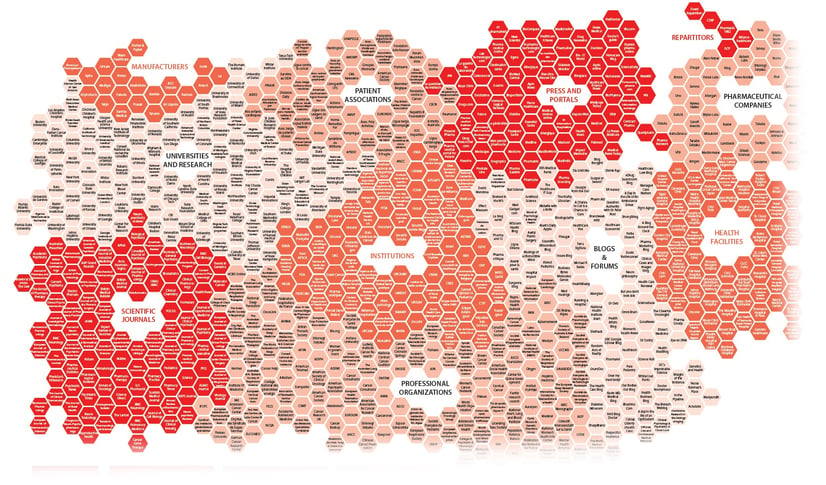 An excerpt from a source map of the pharmaceutical industry (Digimind Insights)
An excerpt from a source map of the pharmaceutical industry (Digimind Insights)
3. Establish your mapping of priority sources whose new publications are to be analyzed first, and then complete with all the other sources, including the publications of your competition (corporate, scientific sites, marketing presentations, exhibitions, webinars, blogs, network patents), consumer conversations (consumer opinions, social networks, forums, blogs, etc.), media publications (national, regional, generalist and specialized media articles, product tests), social accounts, influencer blogs, and opinion leaders, sector analysis sites (market sites, consulting firms, polling institutes) and more.
The importance of a source can vary greatly between the different sectors of activity, particularly for social networks: Facebook will be dominant for certain consumer sectors in terms of the volume of conversations, and other sectors will see the predominant forums for example.
.jpg?width=659&height=371&name=Copy%20of%20blog%20photos%20-%208%20apps%20Competitors%20(3).jpg)
Sector specifics of the sources to be monitored:
Breakdown of conversation volumes by the majority of social media channels
4. List your keywords thinking "broadly": brands, subsidiaries, products, and technologies in the professional language ("customer experience", "customer relationship") and consumer language ("I called the customer service number").
5. Monitor your entire environment:
- Monitor more than your competitors, i.e. also major players, who are not direct competitors,
- Monitor owned media (the publications of your competitors) as well as earned media (the publications of journalists, customers, and consumers of your competitors).
%20(2).jpg?width=734&height=413&name=Copy%20of%20blog%20photos%20-%208%20apps%20Competitors%20(1)%20(2).jpg)
Example of the collection and analysis axes for competitor monitoring
6. Monitor your competitor's language. It's not enough to just monitor in English. If their first language is Korean, it will be necessary to integrate the language for effective competitive intelligence.
7. Organize your competitive themes to facilitate analysis: from the start of the collection of messages or data, it's advisable to think of files or classification tags to facilitate subsequent analysis: classification by competitors, regions, financial data, R&D, sales, marketing.. tagging by analysis objective: SWOT, product benchmark, sentiment comparison, campaign performance, etc.
Another example: One of the most interesting areas of analysis for social media data is the analysis of the customer journey (or customer experience) that we will observe among competitors.
.jpg?width=727&height=409&name=Copy%20of%20blog%20photos%20-%208%20apps%20Competitors%20(2).jpg) Analysis of social conversations for the different phases of the customer journey
Analysis of social conversations for the different phases of the customer journey
8. Thinking "field" and internal information, social competitive intelligence must be supplemented by field monitoring from events but also from your colleagues:
- Field feedback from your colleagues:
How to involve your colleagues in your competitor analysis? By making them aware of information feedback. Sales representatives, for example, who are in the field, can pick up information about your competitors when they visit prospects. A medical representative often hears news about competitors while waiting to visit a practitioner. High-performance monitoring and social media listening software will collect and centralize the information sent by employees. - Events:
One of the few times when you can physically approach your competitors is at the trade shows and conferences they attend. Consider sending collaborators to collect and listen to these competitors. Again, each employee must have a specific objective for the type of information to be gathered.
9. Cross-reference data to put information into perspective
Analysis support tools can highlight clues by automatically comparing thousands of pieces of information. Thus, a client came across hundreds of job offers from a competitor in several countries. Via an email-generated matrix, they analyzed them by type of profile and noticed, for example, that many engineer profiles were recruited in China, presaging an increase in production in this country for a certain product.
10. Synthesize your information in dashboards before dissemination
It's necessary to compile and share the information you have collected. The 1st level of synthesis is carried out, thanks to dynamic dashboards that bring together a few essential views of the essential information on a competitor: share of voice, new products, recent articles, buzz, and matrix of benchmarks. Advantages of the dashboard: it's a work tool, but also a communication document that you can share with your colleagues.
This dashboard should be supplemented by other dissemination media: analysis reports, newsletters, intranet flow, etc.
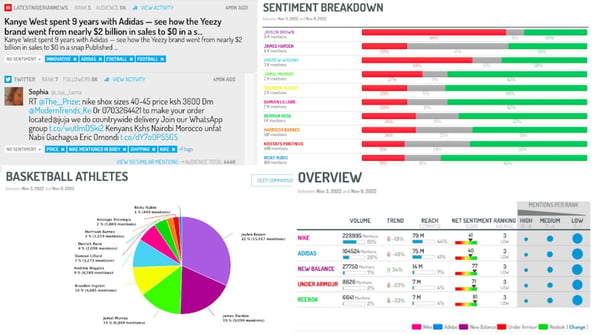
A dashboard snippet for your competitive analysis (via Digimind Social)
III. Customer case study and competitive analysis
Context:
A client in the construction tools and equipment industry develops, manufactures, and markets products for the renovation, construction, maintenance, and mining industries, primarily for professional end users. Bosch, Ryobi, and Black & Decker are their main competitors.
Objective:
Identify purchase criteria to detect product improvement opportunities.
Solution
The company used Digimind to produce in-depth market analysis reports and performance benchmarks based on consumer insights captured on social media and the web. It monitored different product lines and their competitors, such as cordless power tools, hammers, or saws.
The objective is to identify the purchasing criteria among competitors based on location, products launched, and pricing models they develop to identify opportunities for product improvement. They also monitored post-purchase positive/negative feedback and created reports to inform their product development department about finding gaps and improving functionality (regarding battery accessibility, grip, etc.). 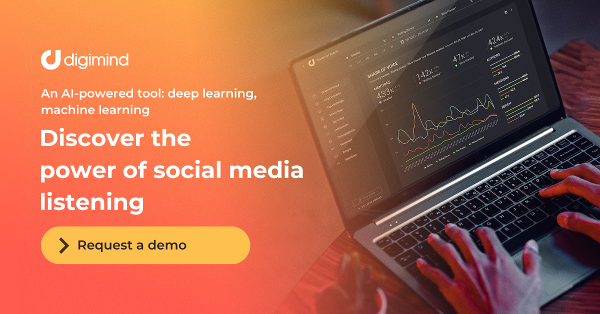
A Social Listening Approach to Competitor Analysis
.png?width=100&name=logo%20(1).png)

